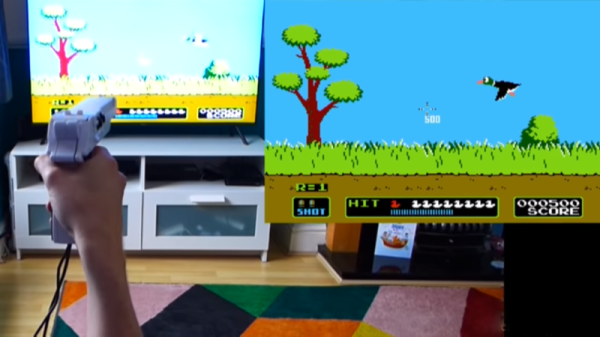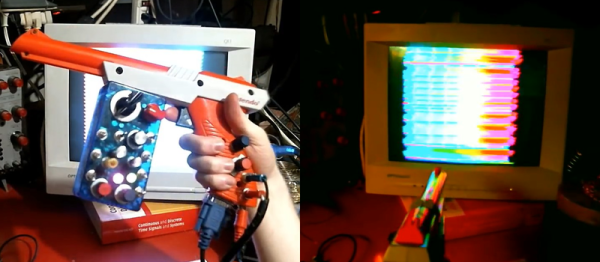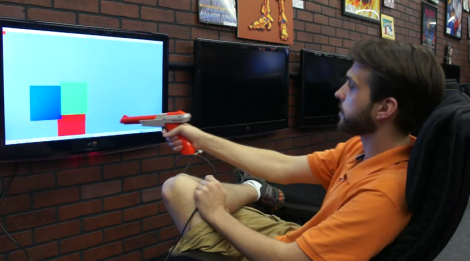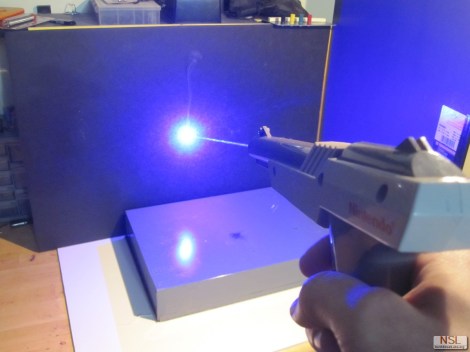Light guns were a fun way to learn to shoot things on consoles, enjoying their heyday in the 80s and 90s. The original designs largely relied on the unique characteristics of CRT televisions and the timing involved in the drawing of their frames. Unfortunately, due to a variety of reasons (dependent on the exact techniques used), they typically do not work at all with modern LCD & plasma screens.

Recently, there has emerged a new project called the Sinden Lightgun. In the How It Works video, it seems to use a fairly standard 30fps camera inside the gun to image the television screen being used by the game. The display is then rendered in 4:3, letterboxed on a 16:9 aspect ratio display, within a rectangular bezel. The image from the camera is then processed, and the distortion of the game image is used to calculate the position of the gun and the direction of its aim. Processing is handled by the host computer running MAME and the requisite coordinates are fed back in to the game code.
The basic concept seems sound, though as always, there’s a healthy amount of skepticism around the project. We’d love to hear your take, on whether the concept is plausible, and whether the lag figures stated are cromulent. We’re always excited to see new developments in the lightgun space! Video after the break.
Our own [Will Sweatman] penned an excellent piece on a variety of ways one could resurrect the venerable game of Duck Hunt, too.
Continue reading “A Lightgun For LCDs – Thanks To Maths!”















